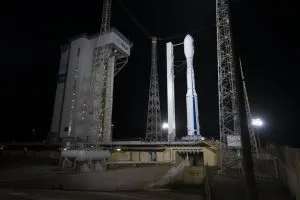And the European Space Agency (ESA) has announced an official agreement to maintain this access for the next decade, to 2035. A new agreement with the French government has been adopted. It also ensures, says the agency, that the spaceport will be ready for new launch service providers, for example, the Italian aerospace company Avio.
Guiana Space Centre
The European Space Port, also known as the Centre Spatial Guyanais (CSG), is located near the town of Kourou. This is situated in the northeast of South America, at latitude 5°3, about 500km north of the equator.
It offers a launch angle of 102°, enabling a wide range of missions from east to north.
The ESA highlights that launchers also profit from the ‘slingshot’ effect. This is the energy created by the speed of the Earth’s rotation around the axis of the Poles. This can increase the speed of a launcher by 460m per second, helping save fuel and thus money. Poetentially, prolonging the active life of satellites.
Recent ESA launches from the CSG, for example, include a Vega-C launch of the Biomass satellite on April 29, 2025, and Ariane 6 launch on July 9, 2024.
ESA Governance
The agreement also covers other matters of governance, updating the official framework for the spaceport.
For example, there will be a new Launcher Operators Committee under the aegis of CNES (the French Space Agency) with ESA and all launch service providers as members.
It also see the establishment of a strategic ESA-CNES committee for decision-making. This will cover recommendations, monitoring and coordination, for example such as on the future of the CSG.
There will also be criteria for addressing launch schedule conflicts;
Investment
The ESA highlights it has invested €2 billion in improving and developing the ground facilities at the Spaceport.
ESA owns the special infrastructure built for the Ariane, Soyuz and Vega launchers. This includes launcher and satellite preparation buildings. And also, launch operation facilities and a plant for making solid propellant and integrating solid rocket motors.
The French Government chose Kourou in 1964 as a base for launching satellites. With the creation of the European Space Agency in 1975, the French Government shared Guiana Space Centre with the ESA.
Pictured above is Vega-C on the launchpad at CSG.
See also: ESA advances five companies for its European Launcher Challenge

